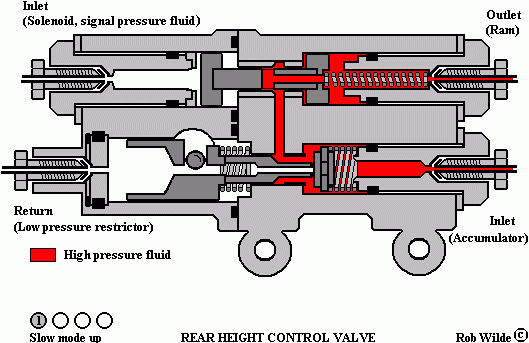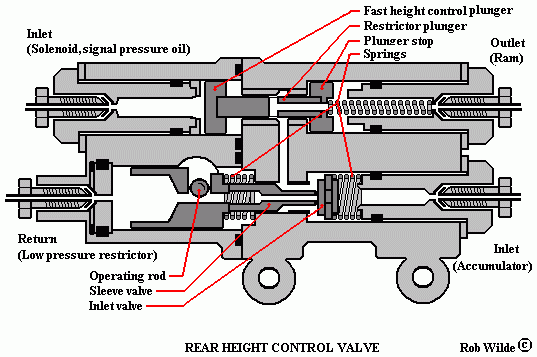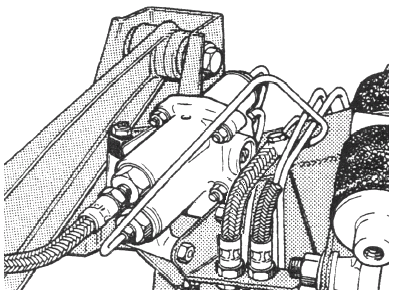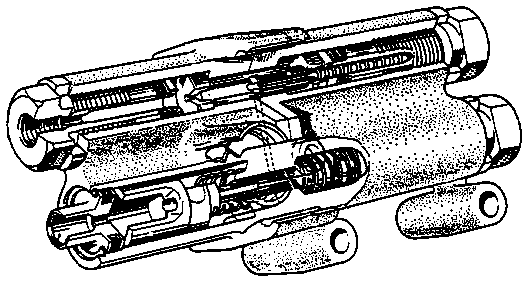The hydraulic system: |
|
|
|
The height control system: |
|
|
|
The Rear height control valve
In the next animation four drawings illustrate the working of the rear height control valve.
For a view on each separate drawing you can go to the bottom of this page.

The next drawing shows the rear height control valve again but now provided with some explanations:
 The rear height control valves are in fact dual valves. First the valve is constructed for activating the rear height control rams and increase the height of the car by means of high pressure fluid. Second together with the solenoid valve the height control valve can change the speed of lifting and lowering the car with the rams. The lifting and lowering of the rear height control rams works in the same way as the front height control valve. Two height control valves are mounted on each side of the rear end of the chassis. The operating rod, connected to the sub frame, causes detection of the height of the car. For increasing the heigth the operating rod will open the valve to let high pressure fluid pass to the rear height control rams. When the car is lifting the operating rod pushes the valve in its opposite direction which causes the fluid to run back to the reservoir. The pressure in the rams decreases which causes the car to lower.
The rear height control valves are in fact dual valves. First the valve is constructed for activating the rear height control rams and increase the height of the car by means of high pressure fluid. Second together with the solenoid valve the height control valve can change the speed of lifting and lowering the car with the rams. The lifting and lowering of the rear height control rams works in the same way as the front height control valve. Two height control valves are mounted on each side of the rear end of the chassis. The operating rod, connected to the sub frame, causes detection of the height of the car. For increasing the heigth the operating rod will open the valve to let high pressure fluid pass to the rear height control rams. When the car is lifting the operating rod pushes the valve in its opposite direction which causes the fluid to run back to the reservoir. The pressure in the rams decreases which causes the car to lower.
As told the second function of the valve is to determinate the speed of this process. This option is designed in order to let the car run smoothly while driving and to lift the car in a more efficient manner (quicker) when standing still and people enter or heavy luggage is put into the car. The speed of lifting and lowering is controlled by the solenoid valve.
|
The next drawings show a rear height control valve when watching it from the bottom of the car right beneath the rear bench:


A further decomposition of the valve, where you can see the operating rod which operates the rear height control valve:
|
 Marinus Rijkers. Disclaimer
Marinus Rijkers. Disclaimer
 Marinus Rijkers. Disclaimer
Marinus Rijkers. Disclaimer